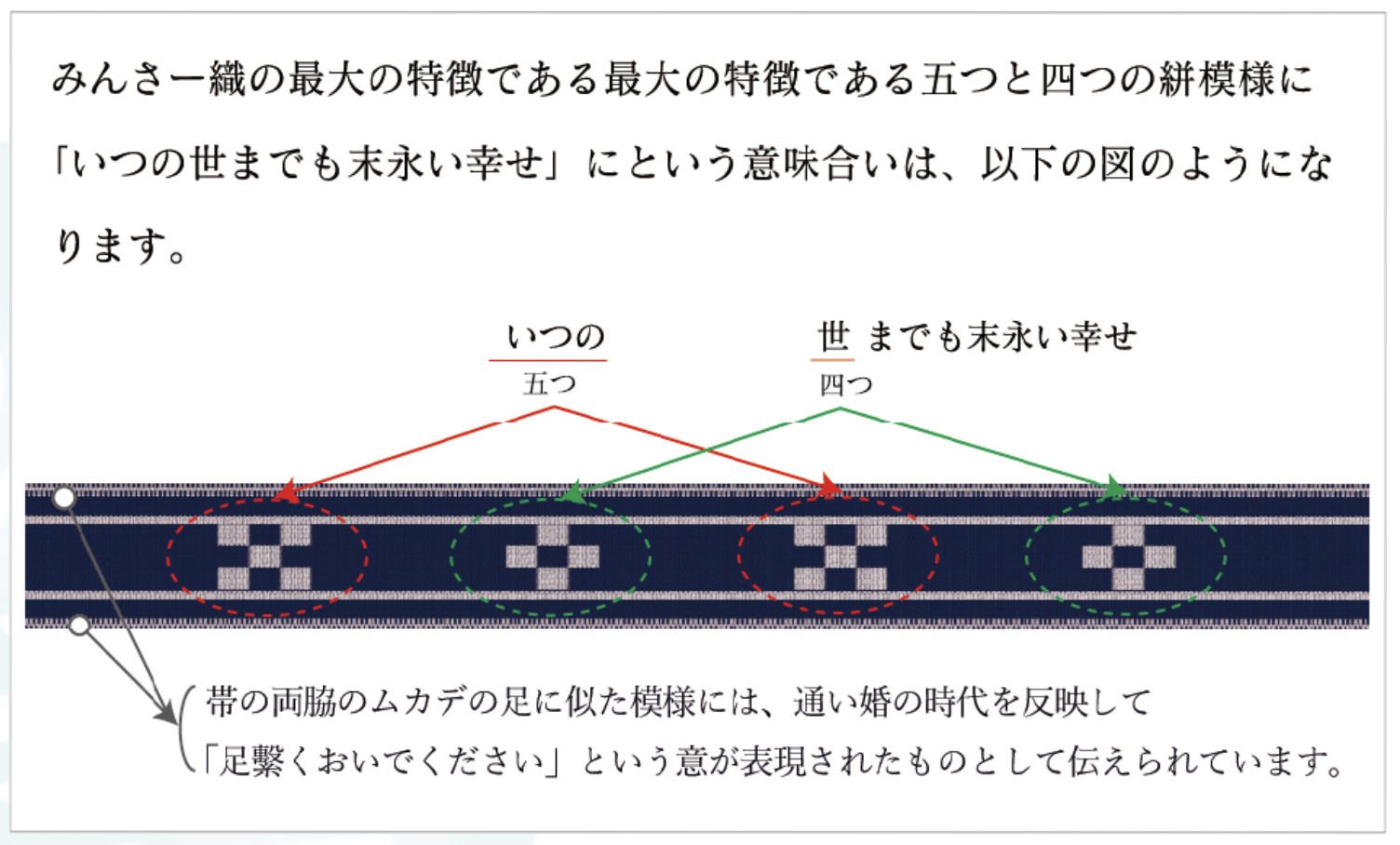On one of our visits to Okinawa, my wife bought a couple of mats with this traditional design. I didn’t really give it much thought until much later when I started to see the pattern used elsewhere—in wallets, obi, and other items from Okinawa. At first, I assumed it was similar to Hakata Ori and Kurume Kasuri, which also have a geometric design woven into them, but with some investigating, I discovered the design has a deeper meaning.
Originating from Taketomi Island in the Yaeyama archipelago, minsa is characterized by a kasuri pattern consisting of five and four squares woven onto an indigo background. Mainly used as an obi, the word minsa means “a narrow obi” (sā) “woven from cotton' (min)”.
Although the exact origin of minsa is not known, it is believe to have started around 400 years ago, when cotton cultivation began in Yaeyama. In ancient times, it was a custom in the Yaeyama region that a woman would weave a narrow fabric and give it to the man as a response to a his marriage proposal. This led to the name “watasa” (lit. “cotton + narrow”). Over time, watasa became minsa.
According to one theory, the narrow textiles made from animal hair and dyed with rock materials that were woven in central and southern Asian countries—Afghanistan to Nepal and India—were introduced to Yaeyama and Okinawa along with Buddhism. These imported textiles were then made with local cotton, becoming the minsā-ori that can be seen today.
It is said that the sanada cords (真田紐, sanada himo), used for weapons, armor, paulownia boxes, and luggage strings, may also have its roots in minsā-ori.
Incidentally, another theory is that sanada is a corruption of “sanar”, which means “woven string” in languages around Tibet. Narrow textiles (sanar), made by Tibetan mountain tribes by dyeing the hair of their livestock and using waist looms, entered Japan by sea along with the introduction of Nanyana Buddhism. Whether sanada has its roots in the Tibetan sanar or indirectly via Okinawan minsā is a question I’ll leave to the experts.
Traditionally, minsā was given by women to men to express their feelings in the past when the custom of married couples living apart was more common.
The chief characteristic of minsā is the repetition of five and four squares, with five meaning “when” (五つの) and four, “world” (世), which put together mean “forever”, such that minsā carry the message of “Itsunoyo mademo suenagai shiawase” (いつの世までも末永い幸せ: May you be happy forever.)
The so-called yashirami (ムカデの足跡, centipede's foot pattern) along the horizontal stripe of a minsā obi implies the word ashigeku (足繁く, lit. to visit a place frequently) and relays the message “Please visit me often, forever.”
For much more on minsā, go here.





